Invented by Sai Zeng, Jun Duan, Alexei Karve, Neeraj Asthana, Vugranam C. Sreedhar, Nerla Jean-Louis, International Business Machines Corp
However, the successful implementation and operation of blockchain networks require robust infrastructure and effective service management. This is where service management providers come into play. They offer a range of services to ensure the smooth functioning and optimal performance of blockchain networks.
One of the key services provided by service management providers is infrastructure management. Blockchain networks require a complex infrastructure consisting of multiple nodes and servers distributed across different locations. Service management providers help in setting up and managing this infrastructure, ensuring that it is secure, reliable, and scalable. They also monitor the infrastructure for any potential issues or vulnerabilities and take proactive measures to address them.
Another important service offered by service management providers is network monitoring and optimization. Blockchain networks operate in a peer-to-peer fashion, where multiple nodes collaborate to validate and record transactions. Service management providers monitor the network to ensure that all nodes are functioning properly and are in sync with each other. They also optimize the network to minimize latency and maximize throughput, ensuring fast and efficient transaction processing.
Security is a critical aspect of blockchain networks, considering the sensitive nature of the data they handle. Service management providers implement robust security measures to protect the network from cyber threats and attacks. They conduct regular security audits, implement encryption protocols, and employ advanced intrusion detection and prevention systems. Additionally, they provide disaster recovery and backup solutions to ensure the availability and integrity of blockchain data.
Service management providers also offer performance monitoring and analytics services. They track and analyze various performance metrics such as transaction speed, block confirmation time, and network congestion. This helps in identifying bottlenecks and inefficiencies in the network and taking necessary actions to improve performance.
As the market for blockchain technology expands, the demand for service management providers is expected to grow significantly. Organizations that adopt blockchain networks will require specialized expertise and resources to manage and optimize their infrastructure. Service management providers fill this gap by offering their expertise and experience in managing complex blockchain networks.
Furthermore, service management providers play a crucial role in ensuring compliance with regulatory requirements. Blockchain networks often deal with sensitive data and financial transactions, making compliance a top priority. Service management providers help organizations navigate through the complex regulatory landscape by implementing appropriate controls and processes.
In conclusion, the market for service management for the infrastructure of blockchain networks is witnessing rapid growth. Service management providers offer a range of services to ensure the smooth functioning, security, and performance optimization of blockchain networks. As the adoption of blockchain technology continues to increase, the demand for these services is expected to rise, presenting significant opportunities for service management providers in the coming years.
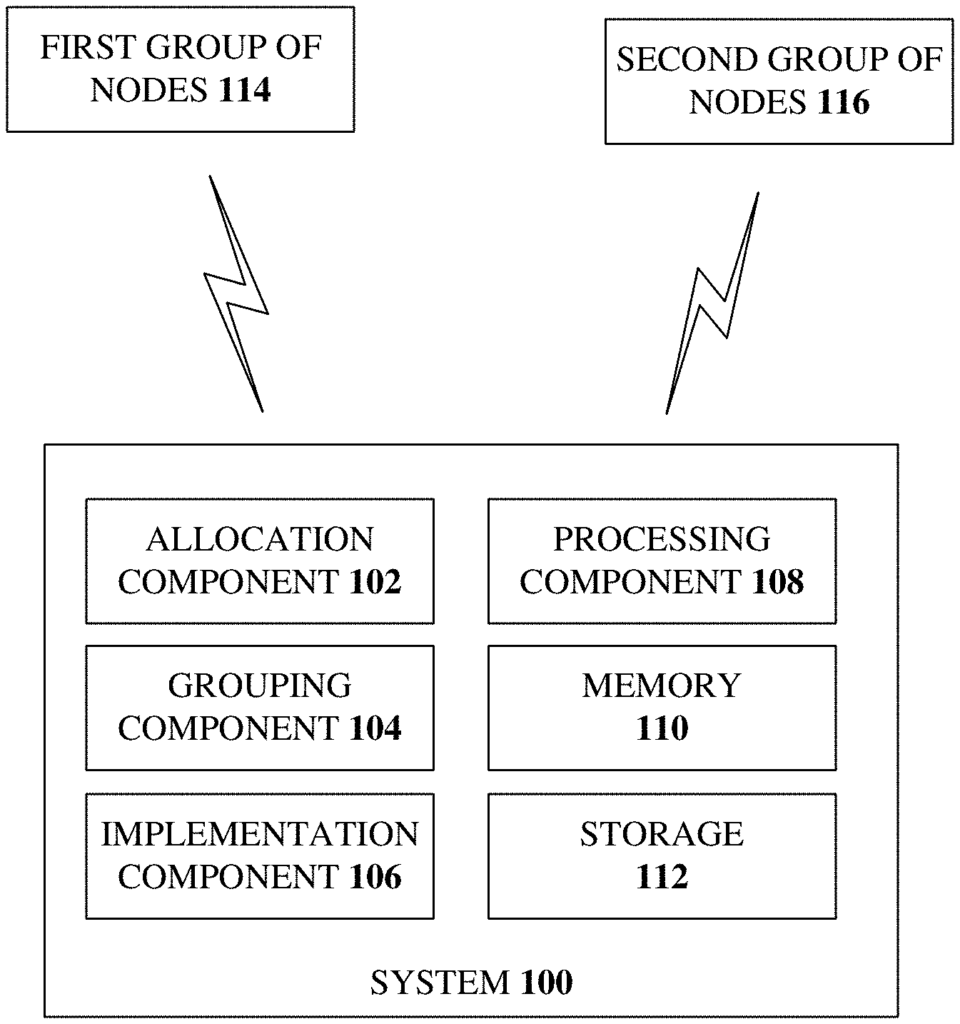
The International Business Machines Corp invention works as follows
Techniques for service management of the infrastructure in blockchain networks are presented.” The system consists of a memory, and a processor which executes the computer executable components that are stored in it. Computer executable components may include an allocation component and a grouping or implementation component. The allocation component may assign, in a blockchain network a first grouping of nodes belonging to a particular node type a set of first operation slots, and a different second grouping of nodes belonging to a different node kind to a set of second operation slots. The grouping component may aggregate the second node group assigned to the second operation slot with the node group within the first operation slot. The implementation component can perform a service-management operation. During the execution of a service management operation, a consensus algorithm may be satisfied.
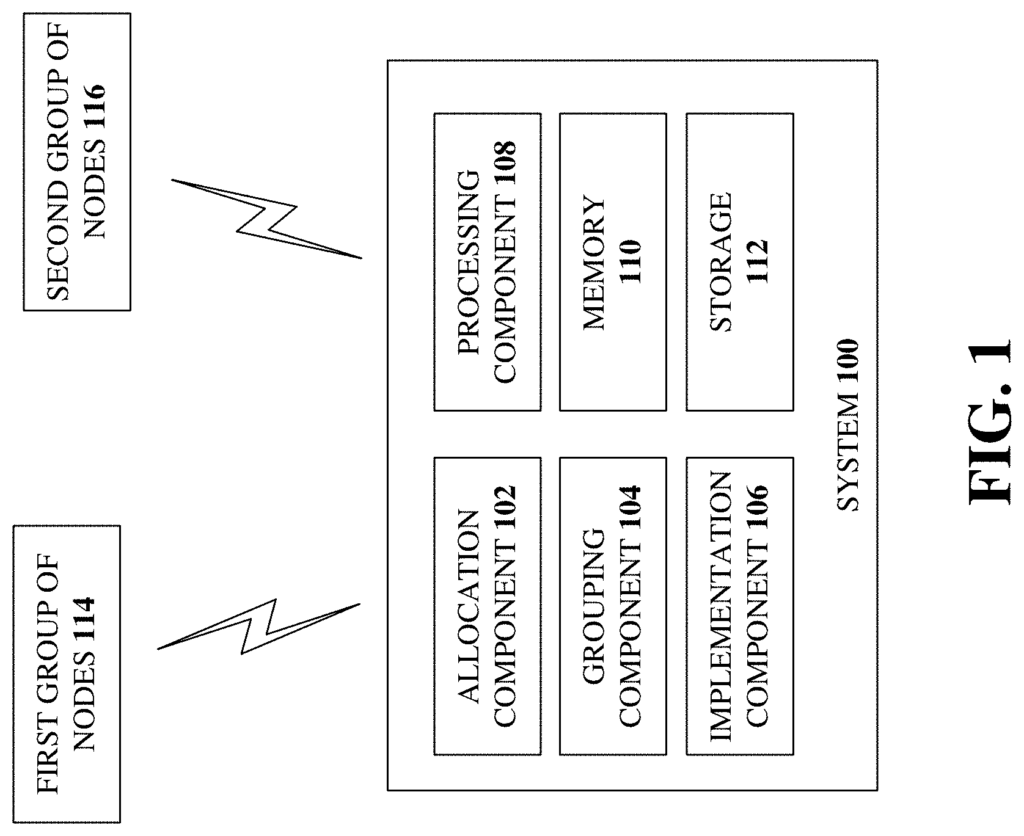
Background for Service Management for the Infrastructure of Blockchain Networks
The disclosure is about distributed computing systems, and more specifically service management of interdependent blockchain functions. As containers of servers, different types of nodes may be hosted in a blockchain network. The different types of nodes have different functions. Therefore, the management of the servers should take into account the functionalities provided by the nodes.
For example, Carlen et al. (U.S. Pat. No. No. 9,645,811) describes a?method that detects failure of a device in a controller, where the device includes a service in progress and is isolated from services in other devices on the controller? See Abstract. The controller node terminates container, including the service, and determines an known state for service. See id. The controller node starts the service from a known state in a container that replaces a terminated container. “See id.
The following is a summary that will help you understand the basic concepts of one or several embodiments of this invention. This summary does not aim to define any key elements or scopes of any embodiments, nor any claims. The summary is intended to simplify concepts as a precursor to a more detailed description. “In one or more embodiments of the present invention, systems, computer implemented methods, apparatuses and/or computer programme products that facilitate management of infrastructure for blockchain networks are described.
According to one embodiment, a computer system can include a memory for storing computer executables and a processor which executes these computer executables. Computer executable components may include an allocation component which assigns, in a blockchain network a first group nodes having a type of first node to a set of first operation slots, and a group of second nodes with a type of second node, which is different from the type of first node, to a set of second operation slots. Computer executable components may also include a grouping element that aggregates the nodes of the second group assigned to the second operation slot with those of the first node group within the first operation slot. One or more slots in the first set can contain a plurality assigned nodes that correspond to both the first and second groups of nodes. The computer executable components may also include an implementation component which can execute a management service based on a grouping component which aggregates both the first and second groups of nodes in the first set operation slots. During the execution of a service management operation, a consensus algorithm can be satisfied.
In one example, the component of allocation can assign the nodes of the first group independently of an assignment for the nodes of the second group. In another example, a first node type could be a first functionality present in the network. In this example, a second node type could be a functionality that is present in the network. The first functionality may be different than the second functionality.
In another instance, the implementation component could execute the service-management operation based upon an endorsement policy that is associated with the first node group and the consensus algorithm that is associated with the node group 2 within the blockchain network. In this example, an endorsement policy could determine the minimum number of second group nodes that are required to endorse a transaction. This would be done by applying a digital sign to the transaction. If the service management operation removes the nodes that are currently serving transactions, but maintains the minimum number of the nodes, the individual transactions can still be cancelled. In this case, the client may reissue transactions. So, we can ensure that only validated transactions are added to the blockchain.
According to an example, a consensus algorithm could provide both a valid order and a correct validation of a group of transactions in respective blocks of a Blockchain by maintaining a minimal number of first and second groups of nodes. In other examples, a consensus algorithm can ensure a correct order and validation of a set transactions in respective blocks by maintaining a minimal number of nodes in each plurality node group that is currently active. According to another example, the grouping components can reduce the number of steps required to update the first node group and the second node group during the implementation component performing the service management operation.
Another embodiment is a computer-implemented process that involves assigning, via a system coupled to a processor within a Blockchain network, a group of first nodes belonging to a type of first node to a set of first operation slots, and a group of second nodes belonging to a type of second node, which differs from the type of first node, to a set of second operation slots. The system can aggregate the second group assigned to the second operation slots and the first group within the first operation slots. The first set of slots can include a plurality assigned nodes that correspond to both the second and first groups of nodes. The method may also include executing a service-management operation by the system based on aggregating both the first group and second group of the nodes within the first operation slots. During the execution of a service management operation, a consensus algorithm can be satisfied.
According to an example the second group of entities can be endorsing nodes. The method can also include receiving a transaction sent to the blockchain network by the system and determining by the system whether two or more nodes from the second group endorsed the transaction. The method may also include completing the transaction by the system during the execution process of the service management operations.
Yet another implementation relates to computer program products for facilitating service-management for a Blockchain infrastructure.” The computer program can be a computer-readable storage medium with program instructions embedded therein. The program instructions may be executable by an operation component. They can cause the component to assign a group of first nodes, of a particular node type within a blockchain, to one set of slots, and another group of second nodes, of a different node kind, to a separate set of slots. The program instructions may also be used to cause the processing element to aggregate the second group assigned to the second operation slots and the first group within the first operation slots. One or more first set operation slots may include a plurality assigned nodes that correspond to both the second and first groups of nodes. The program instructions may also cause the processor component to perform a service-management operation by aggregating the first group and second group of nodes within the first operation slots. During the execution of a service management operation, a consensus algorithm can be satisfied.
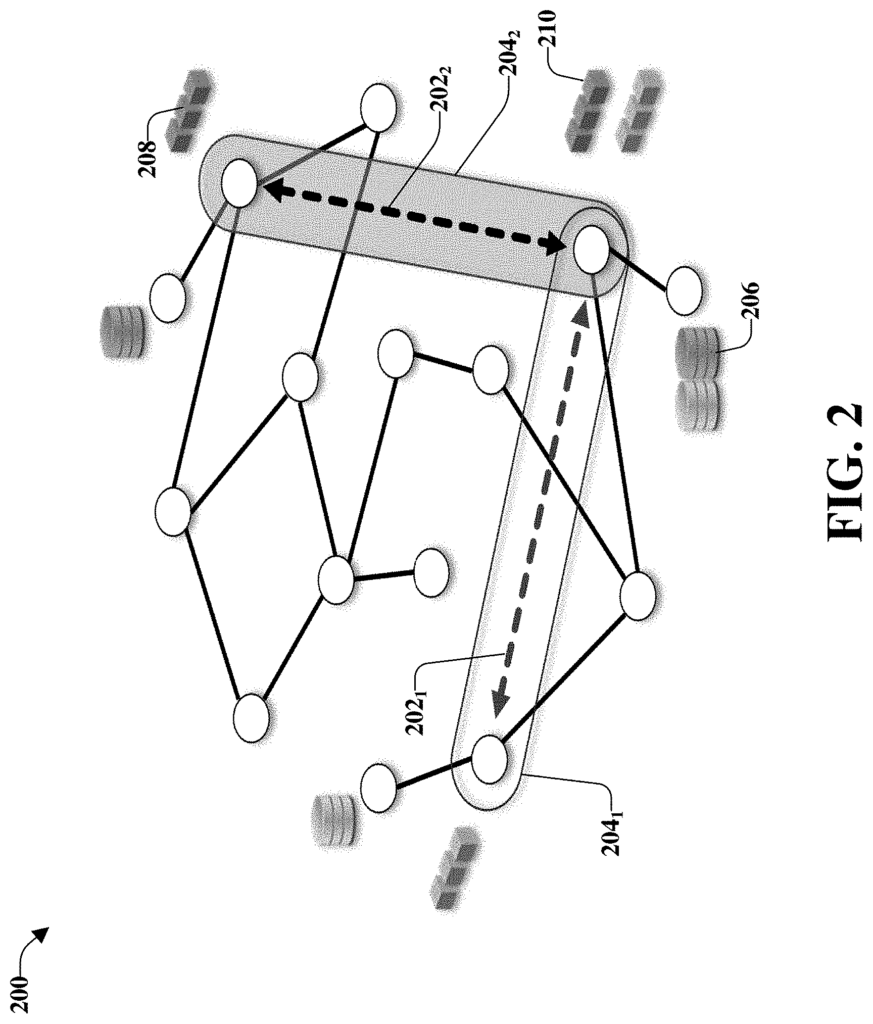
Another embodiment” can refer to a Blockchain network which can consist of a set of first nodes which executes a first functionality and a set of second nodes who execute a secondary functionality. The first functionality may be different than the second functionality. The blockchain network may also include a service-management engine that consists of a memory for storing computer executables and a processor to execute the components. Computer executable components may also include a categorization feature that determines which nodes perform the first functionality, and which nodes perform the second functionality. Computer executable components may also include a rule component which determines the number of steps that must be performed to perform a service management operation on the first set nodes, and the second quantity of actions to be taken to perform the same service management operations on the second set nodes. The computer executable components may also include an implementation component which executes the service-management operation on the basis of an aggregation between the first and second quantities of steps. The aggregation may define a minimum amount of steps required to execute the service management operation.
In an example, a rule component can determine that the quantity of nodes within the first set is less than the defined quantity of the nodes specified in the service management operation. The computer executable components may also include an insertion component which adds one node or more to the first node set. The insertion component may determine the number of nodes that should be added based on the difference between the nodes of the first set and the nodes defined in the insertion component.
According to a second example, the rule component could determine that the number of nodes within the first set is greater than the defined quantity of the nodes specified for service management operation. The implementation component is also able to execute the service-management operation on the initial set of nodes, without affecting the availability of the Blockchain network.
Yet another embodiment” relates to a computer-implemented technique that can include determining, using a system that is operatively connected to a processor that a set of first nodes within a blockchain network perform a certain functionality, and that a set of second nodes within the blockchain network perform a different functionality from the first functionality. The method may also include determining by the system a first number of steps that must be performed to perform a service management operation on the first set nodes, and a subsequent quantity of steps for the service management operations on the second set nodes. The method can also include executing the service management operation by the system based on the aggregation between the first quantity and the second amount of steps. The aggregation may define a minimum amount of steps required to execute the service management operation.
DESCRIPTION DU DRAWINGS
FIG. “FIG.
FIG. “FIG.
FIG. “FIG.
FIG. “FIG.
FIG. “FIG.
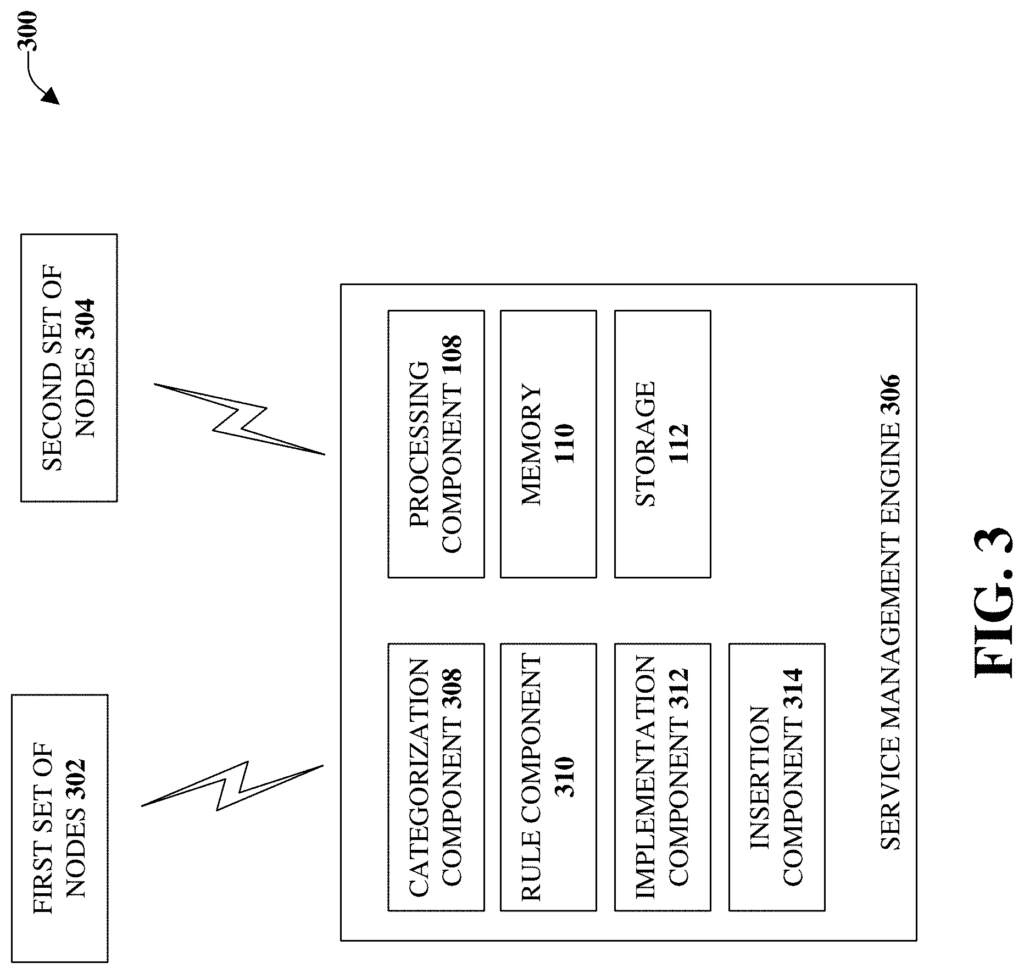
FIG. “FIG.
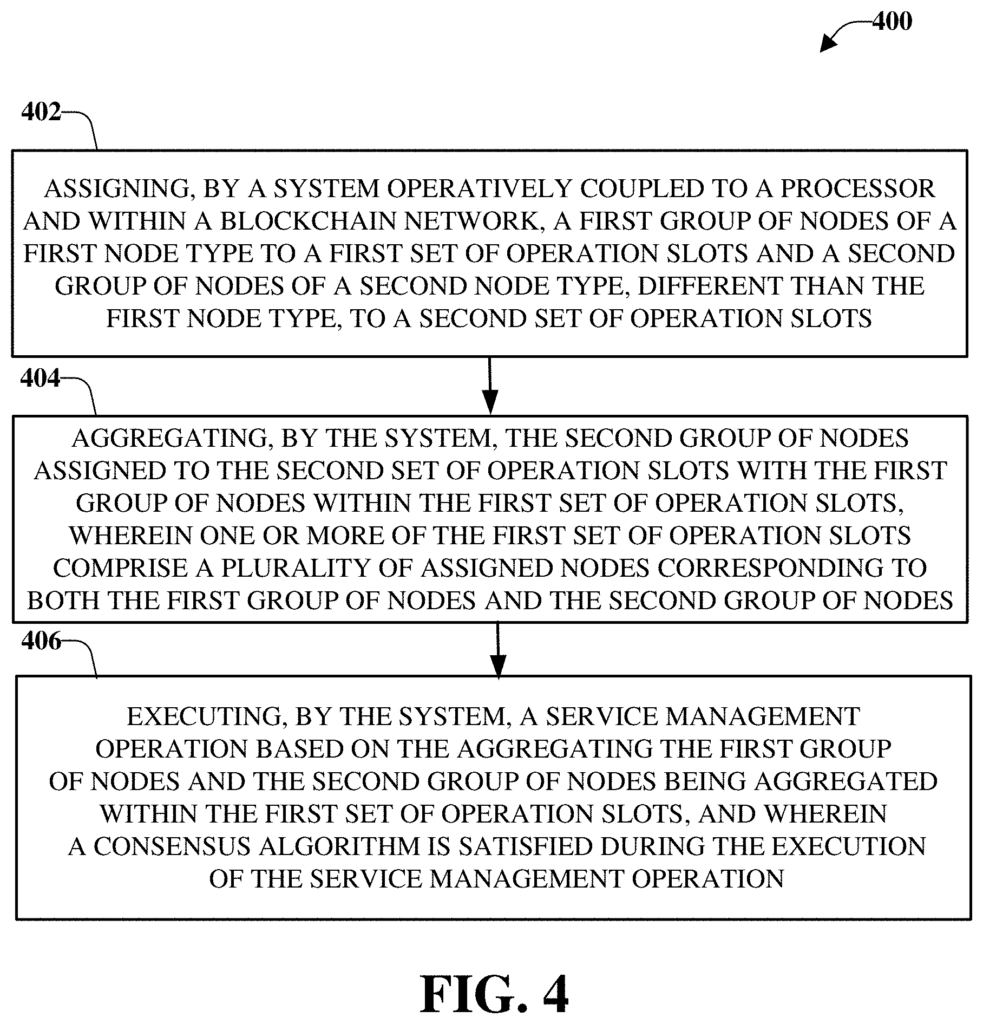
Click here to view the patent on Google Patents.
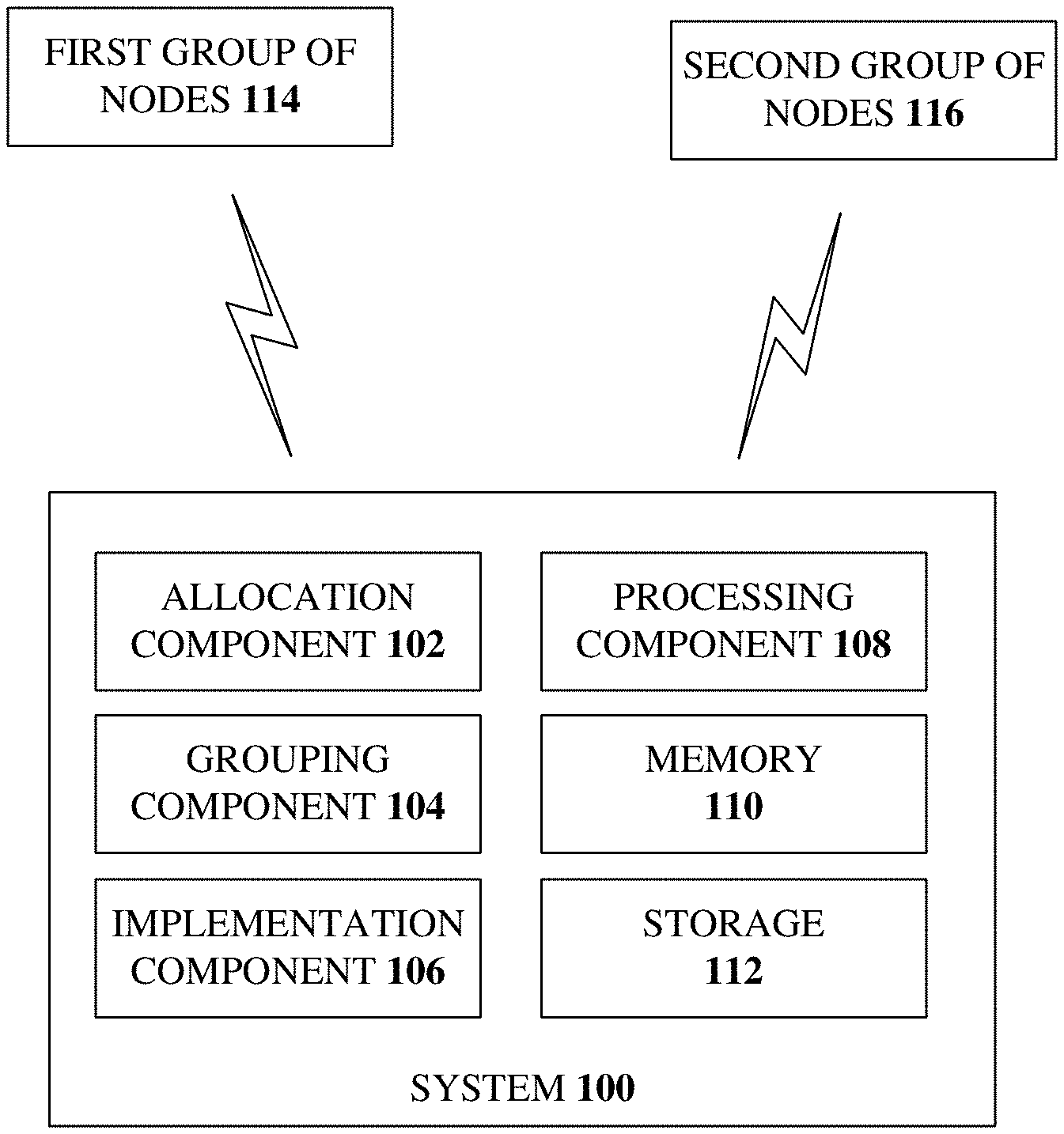
Leave a Reply